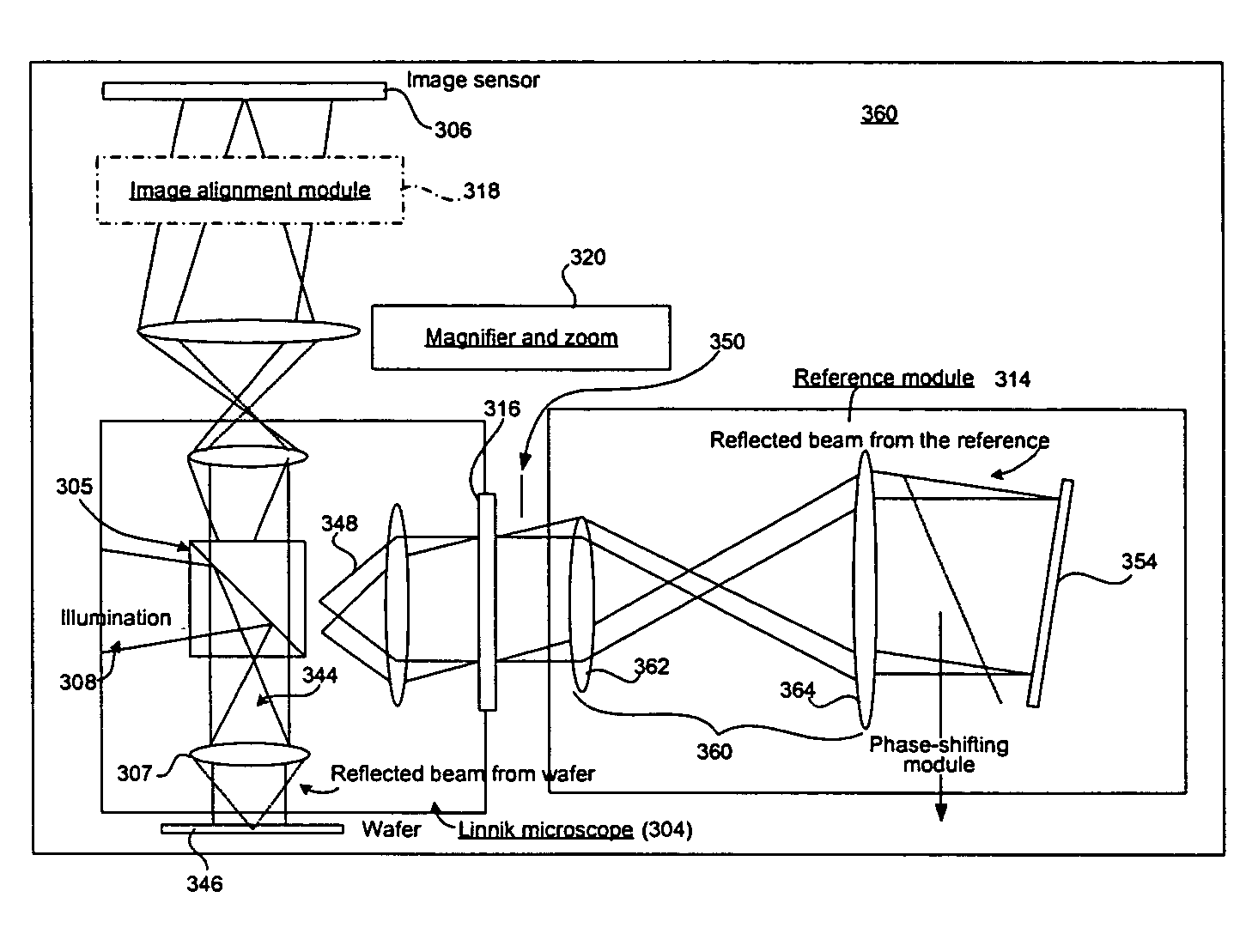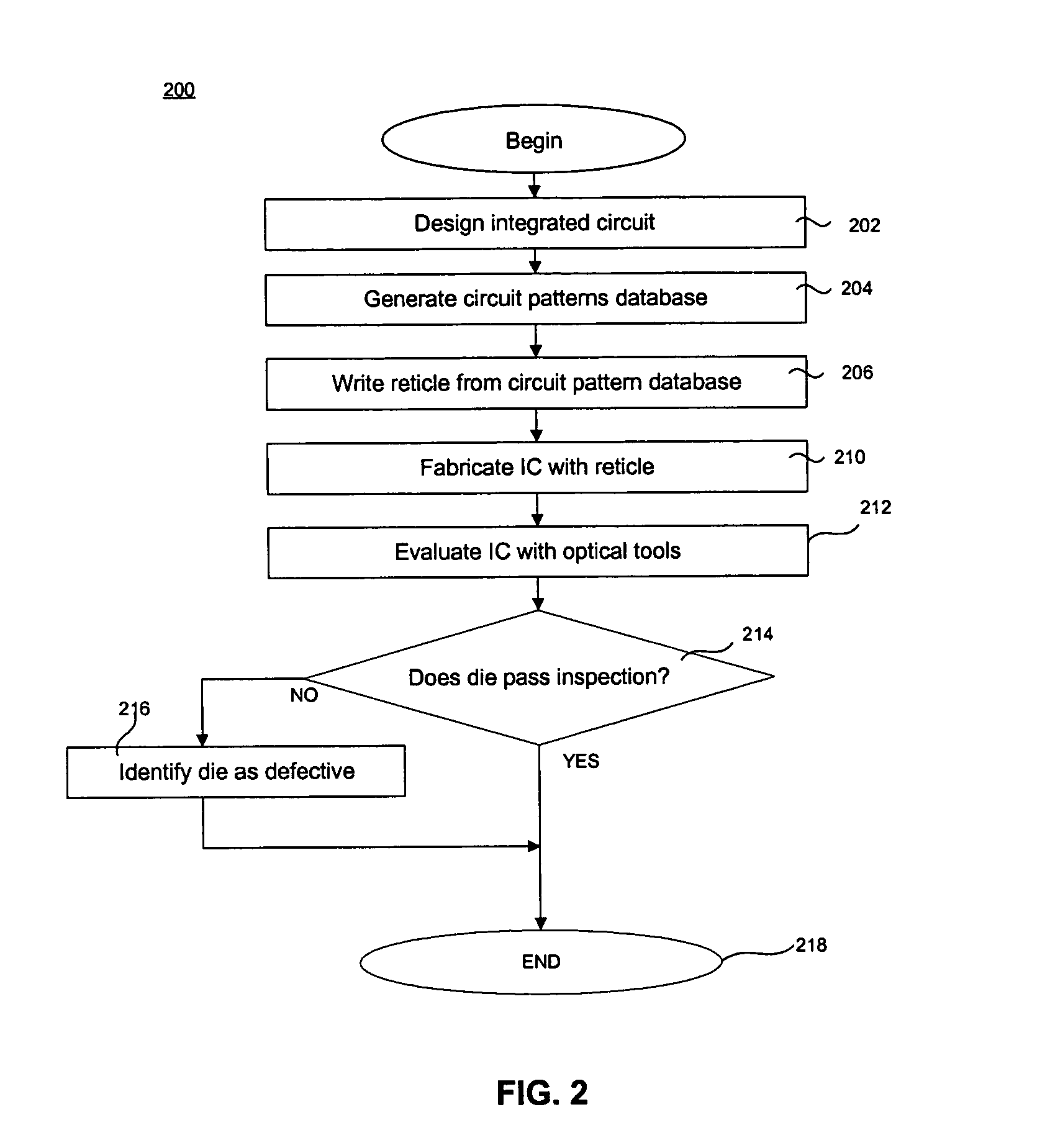Method and apparatus using microscopic and interferometric based detection
a technology of interferometry and detection method, applied in the field of methods and systems, can solve the problems of difficult detection of defects sitting in dark structures, low signal level of dark structures, and inability to discriminate easily between slight perturbations and background, and achieve the effect of less sensitive to process nois
- Summary
- Abstract
- Description
- Claims
- Application Information
AI Technical Summary
Benefits of technology
Problems solved by technology
Method used
Image
Examples
first embodiment
[0056]In the first embodiment, the tilt direction of the reference mirror (e.g., located within the reference module) is tilted to correspond to the direction of the stage scan. FIG. 11A is a diagram illustrating tilting of a reference mirror of an inspection system in accordance with one embodiment of the present invention. As illustrated, the reference mirror 1100 is shown titled along the x-axis. In order to maintain a constant OPD, the stage must cause the wafer scanning movement to occur also in the x direction. Stated another way, the tilting of the reference mirror along the x-axis may produce horizontal fringes 1105, as illustrated in the sample image on sensor 1110 depicted in FIG. 11B. FIG. 11B is a diagram illustrating a sample image appearing on a sensor in accordance with one embodiment of the present invention. Thus, alignment of the tilt direction of the reference mirror with the scanning direction x preserves the optical path difference. The stage movement causing th...
second embodiment
[0057]In a second embodiment employing the sensor TDI mode, optical path difference may be maintained by adjusting the location of the reference mirror in the z-direction to compensate for the optical path change in the reference beam path for each corresponding sensor pixel. FIG. 12A is a diagram illustrating tilting and movement of a reference mirror of an inspection system in accordance with another embodiment of the present invention. As illustrated, the reference mirror 1100 is tilted in the x direction, i.e., about the x-axis. This results in the formation of spatial fringes essentially parallel to a corresponding x axis of the sensor. That is, greater tilting of the mirror 1100 about its x axis increases the spacing between the parallel spatial fringe lines formed on the surface of the sensor while maintaining the direction of the fringe lines as parallel to the sensor's x axis. For purposes of this description, the surface of the sensor lies in the x-y plane of the sensor. I...
PUM
 Login to View More
Login to View More Abstract
Description
Claims
Application Information
 Login to View More
Login to View More - R&D
- Intellectual Property
- Life Sciences
- Materials
- Tech Scout
- Unparalleled Data Quality
- Higher Quality Content
- 60% Fewer Hallucinations
Browse by: Latest US Patents, China's latest patents, Technical Efficacy Thesaurus, Application Domain, Technology Topic, Popular Technical Reports.
© 2025 PatSnap. All rights reserved.Legal|Privacy policy|Modern Slavery Act Transparency Statement|Sitemap|About US| Contact US: help@patsnap.com



